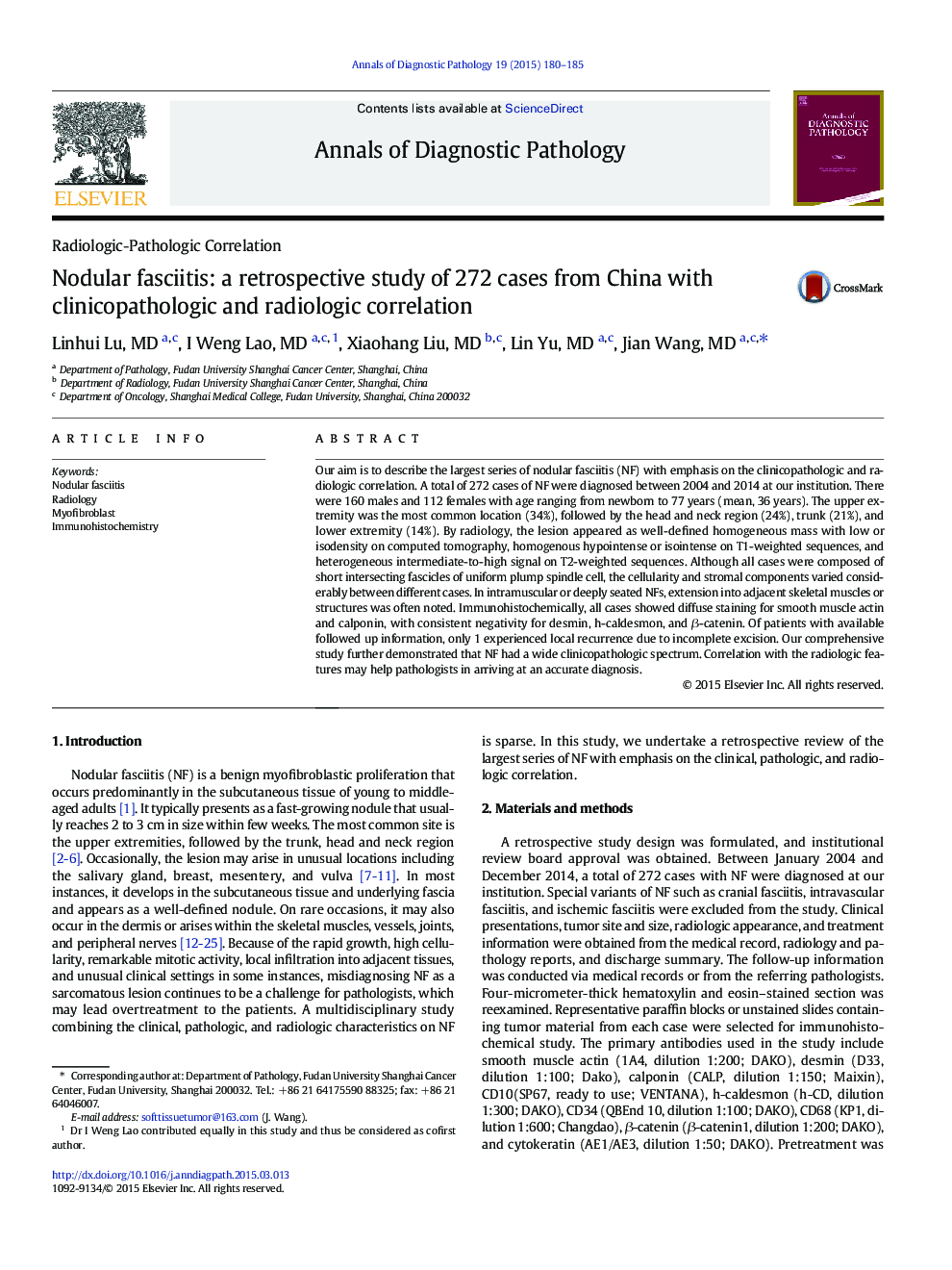| Article ID | Journal | Published Year | Pages | File Type |
|---|---|---|---|---|
| 4129804 | Annals of Diagnostic Pathology | 2015 | 6 Pages |
Our aim is to describe the largest series of nodular fasciitis (NF) with emphasis on the clinicopathologic and radiologic correlation. A total of 272 cases of NF were diagnosed between 2004 and 2014 at our institution. There were 160 males and 112 females with age ranging from newborn to 77 years (mean, 36 years). The upper extremity was the most common location (34%), followed by the head and neck region (24%), trunk (21%), and lower extremity (14%). By radiology, the lesion appeared as well-defined homogeneous mass with low or isodensity on computed tomography, homogenous hypointense or isointense on T1-weighted sequences, and heterogeneous intermediate-to-high signal on T2-weighted sequences. Although all cases were composed of short intersecting fascicles of uniform plump spindle cell, the cellularity and stromal components varied considerably between different cases. In intramuscular or deeply seated NFs, extension into adjacent skeletal muscles or structures was often noted. Immunohistochemically, all cases showed diffuse staining for smooth muscle actin and calponin, with consistent negativity for desmin, h-caldesmon, and β-catenin. Of patients with available followed up information, only 1 experienced local recurrence due to incomplete excision. Our comprehensive study further demonstrated that NF had a wide clinicopathologic spectrum. Correlation with the radiologic features may help pathologists in arriving at an accurate diagnosis.
